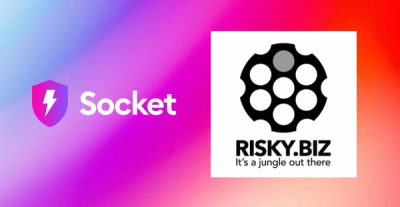
Security News
/Research
Wallet-Draining npm Package Impersonates Nodemailer to Hijack Crypto Transactions
Malicious npm package impersonates Nodemailer and drains wallets by hijacking crypto transactions across multiple blockchains.
@teamleader/ui-icons
Advanced tools
Interface icons used in the Teamleader application(s), both as SVG and matching React-based implementation.
Teamleader's icons package is available on npm.
$ npm install --save @teamleader/ui-icons
or
$ yarn install @teamleader/ui-icons
If you're already using teamleader-ui in your application, you can access the icons using the sub-repo notation '@teamleader-ui/icons'.
import React from 'react';
import { render } from 'react-dom';
import { Button } from '@teamleader/ui';
import { IconWarningMediumFilled } from '@teamleader/ui-icons';
const App = () => {
return (
<Button>
<IconWarningMediumFilled />
Delete this item
</Button>
);
}
render(<App />, document.querySelector('#app'));
^12.0.0^6.9.0Clone this repo
$ git clone https://github.com/teamleadercrm/ui-icons.git
Add your newly designed SVG files to the /icons folder. Make sure they are named properly using the dimensions_name_variant.svg syntax, eg: 14x14_meeting_outline.svg or 24x24_building_filled.svg.
Don't forget to transform your newly added SVGs to React components by running
$ npm run build
Pull the master branch to make sure you have all the latest code on your local machine.
Make a new branch, starting from master and give it the name of the next version you want to release (release/new.version.number).
Bump the version in package.json and commit with message Version bump and push.
Update CHANGELOG.md
Replace [unreleased] with the [new.version.number] and add the release date next to it, like this- yyyy-mm-dd`.
Clean up the unused titles.
Prepare for next release by adding the following content on top of the file:
## [unreleased]
### Added
### Changed
### Deprecated
### Removed
### Fixed
Commit with message Update changelog and push.
Make a pull request on Github where you add the changelog items as the description and wait for approval.
Make a draft release on Github and fill in the following fields:
new.version.number @ target: masternew.version.numberchangelog itemsOnce the pull request has the needed amount of approvals, merge it into the master branch.
Publish the earlier created draft release on Github.
In your console, pull the master branch.
Publish to npm using the npm publish --access=public command.
[2.9.0] 2024-01-16
FAQs
Teamleader UI icons
The npm package @teamleader/ui-icons receives a total of 69 weekly downloads. As such, @teamleader/ui-icons popularity was classified as not popular.
We found that @teamleader/ui-icons demonstrated a not healthy version release cadence and project activity because the last version was released a year ago. It has 12 open source maintainers collaborating on the project.
Did you know?

Socket for GitHub automatically highlights issues in each pull request and monitors the health of all your open source dependencies. Discover the contents of your packages and block harmful activity before you install or update your dependencies.

Security News
/Research
Malicious npm package impersonates Nodemailer and drains wallets by hijacking crypto transactions across multiple blockchains.

Security News
This episode explores the hard problem of reachability analysis, from static analysis limits to handling dynamic languages and massive dependency trees.

Security News
/Research
Malicious Nx npm versions stole secrets and wallet info using AI CLI tools; Socket’s AI scanner detected the supply chain attack and flagged the malware.